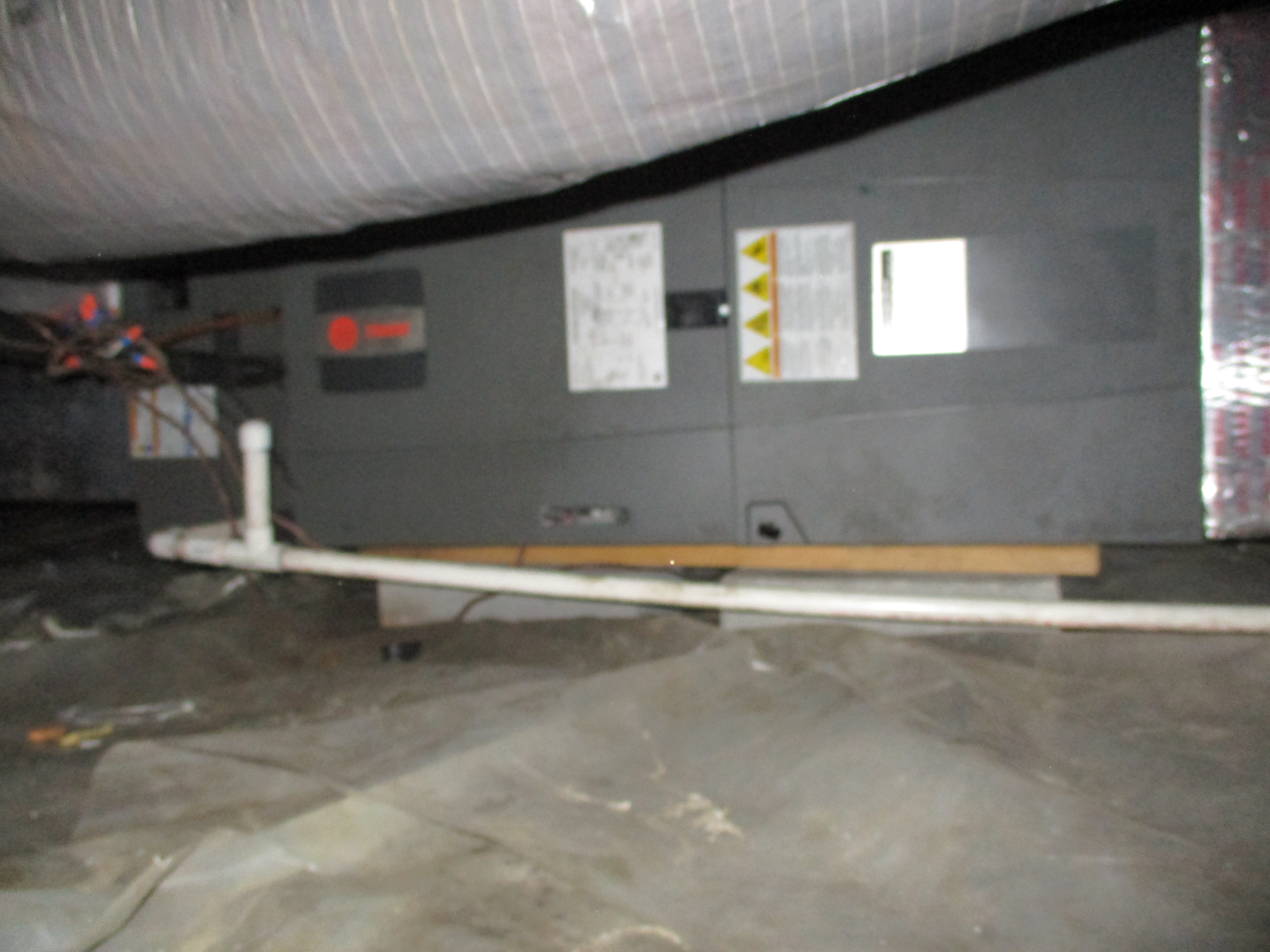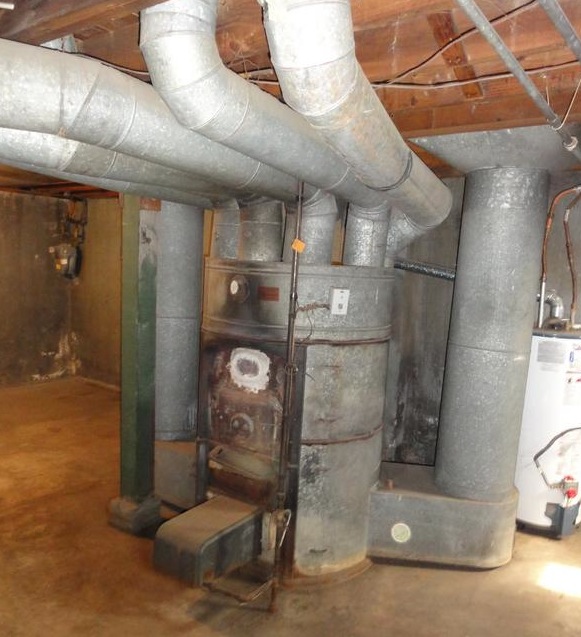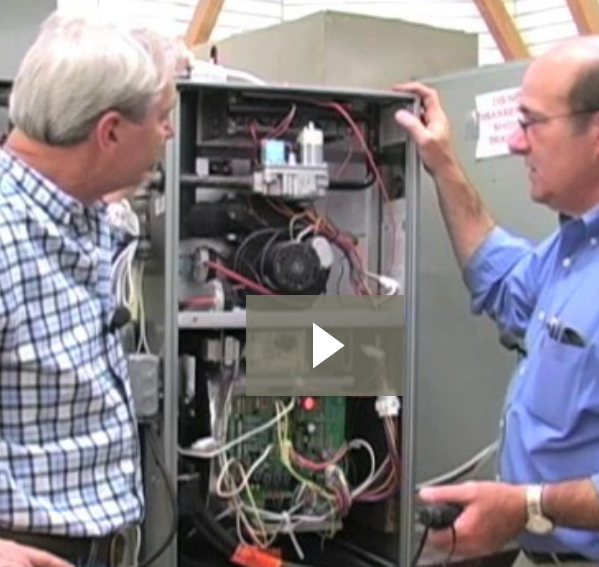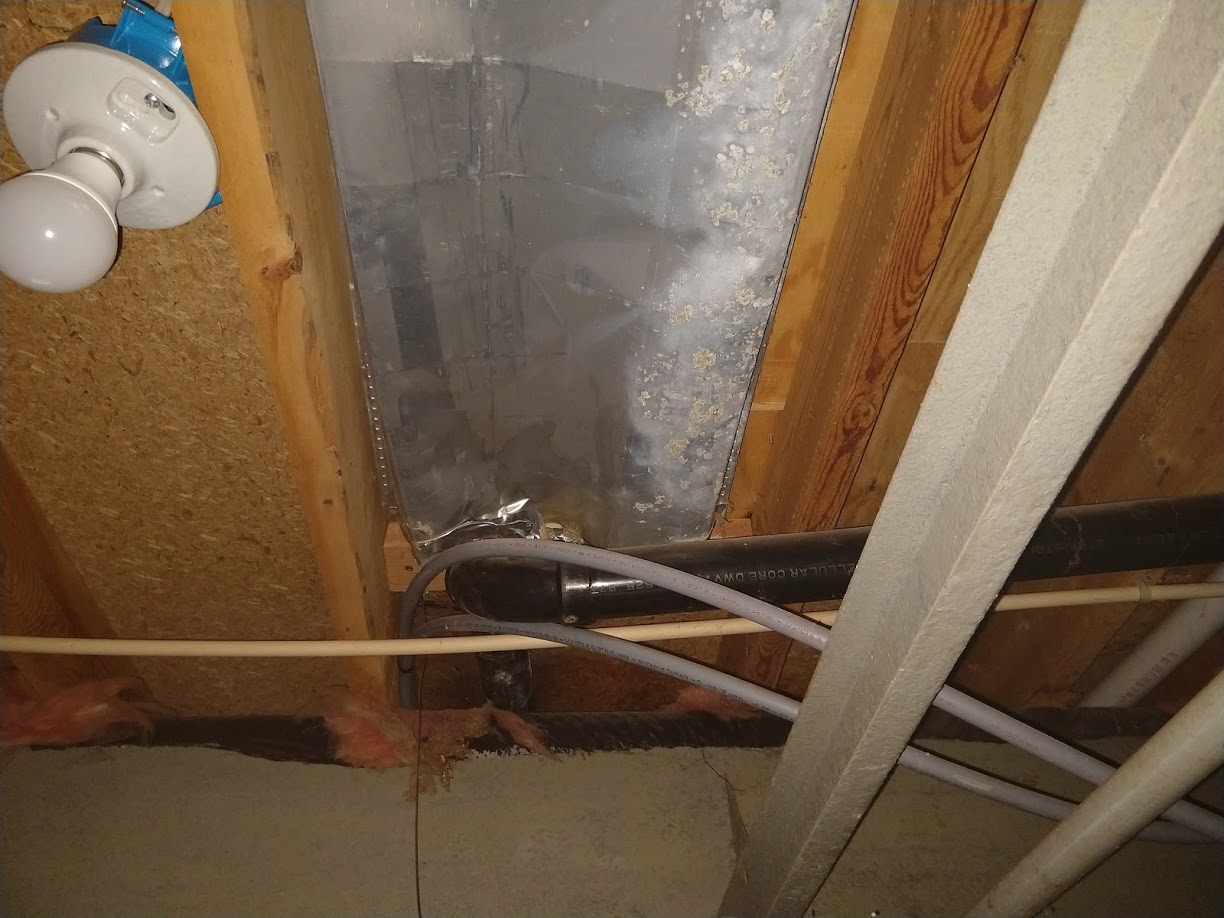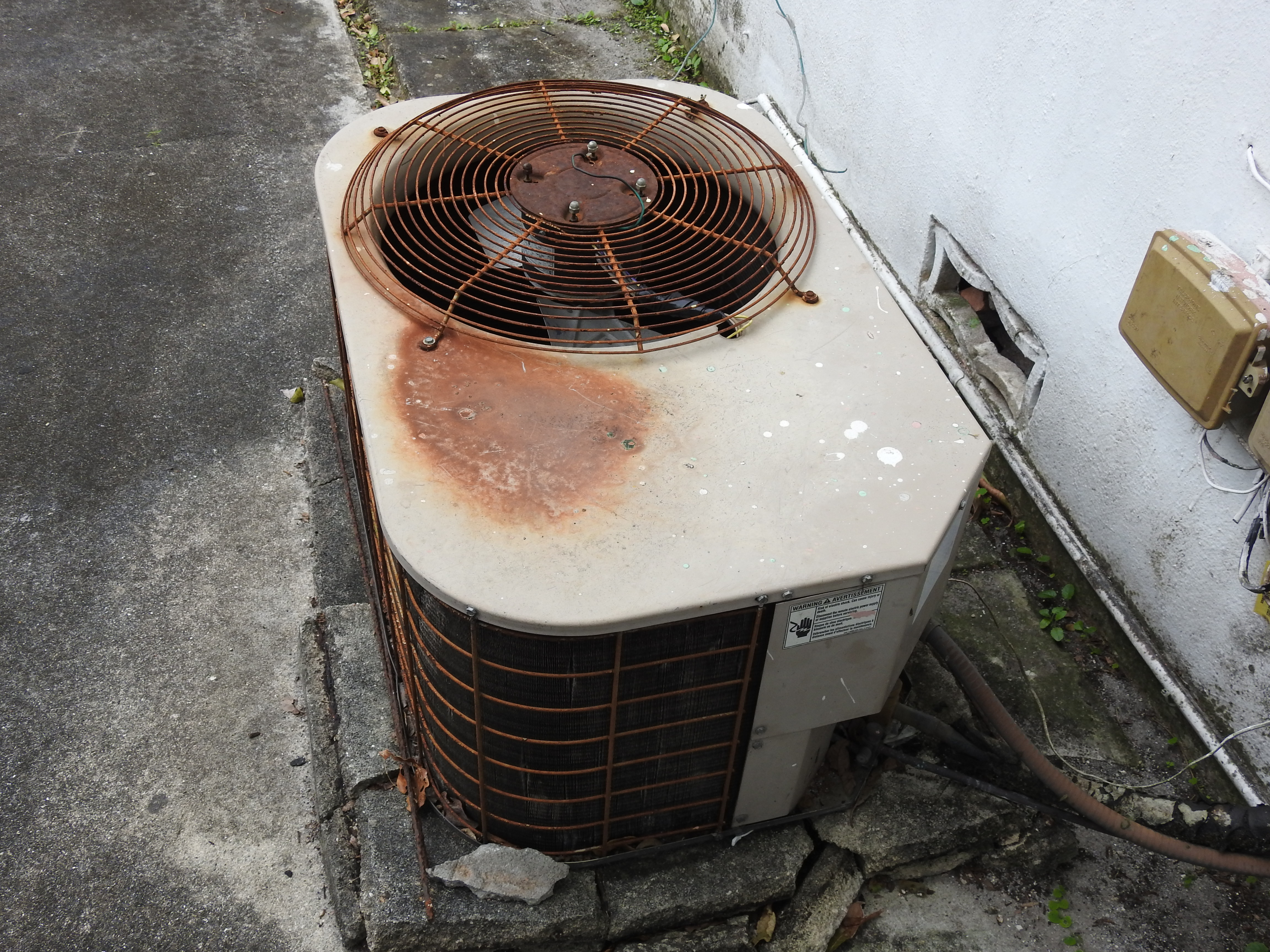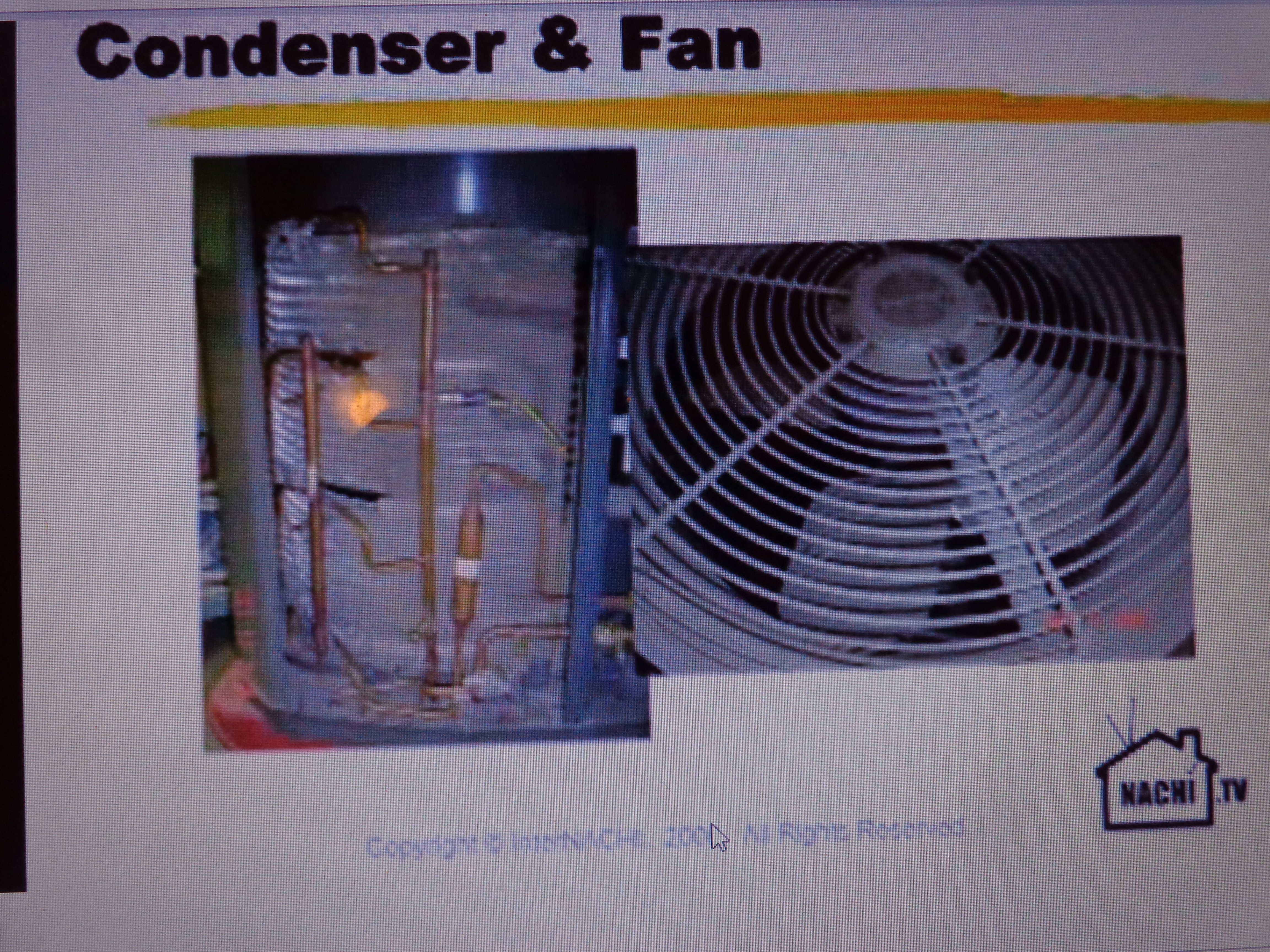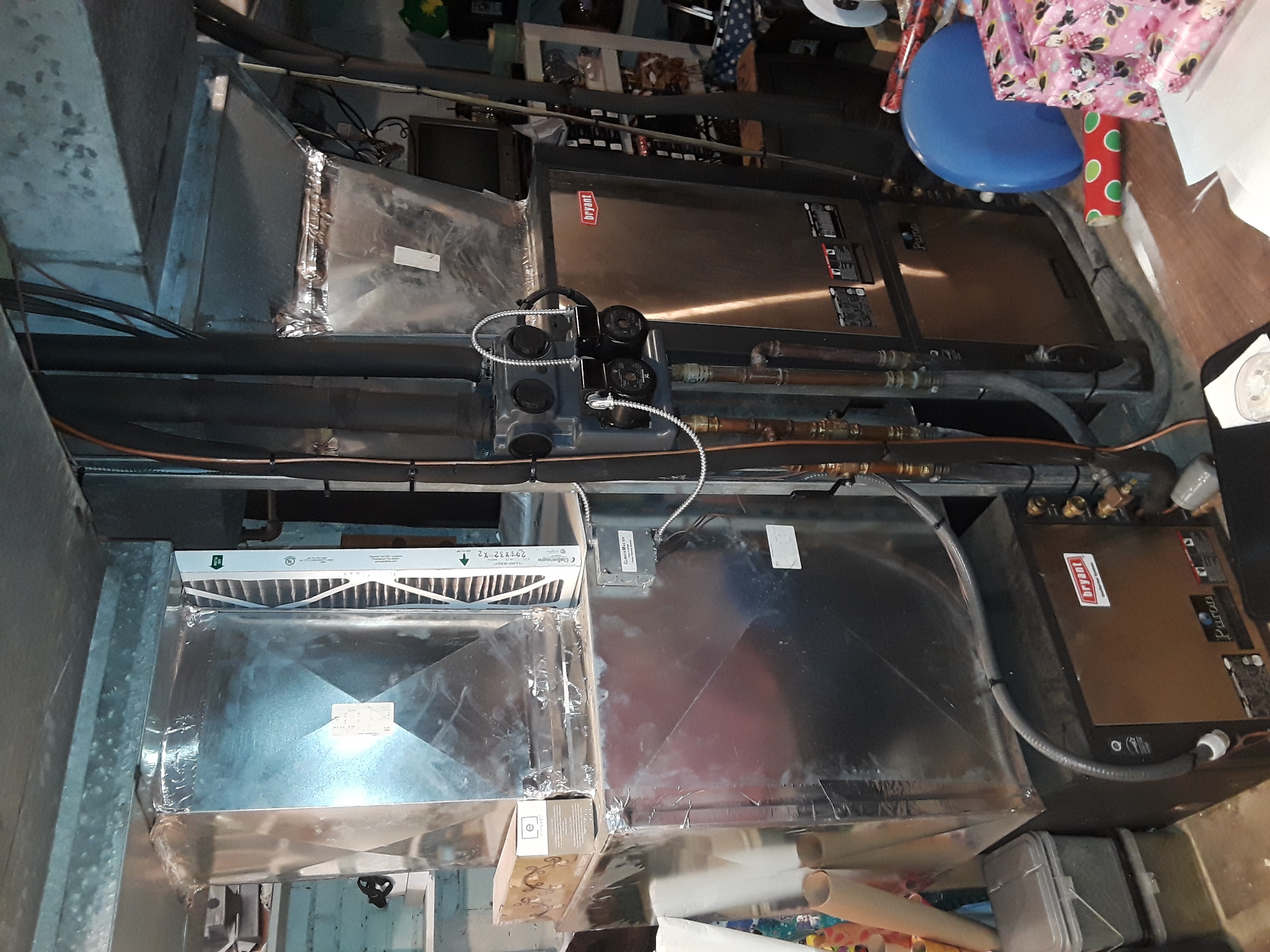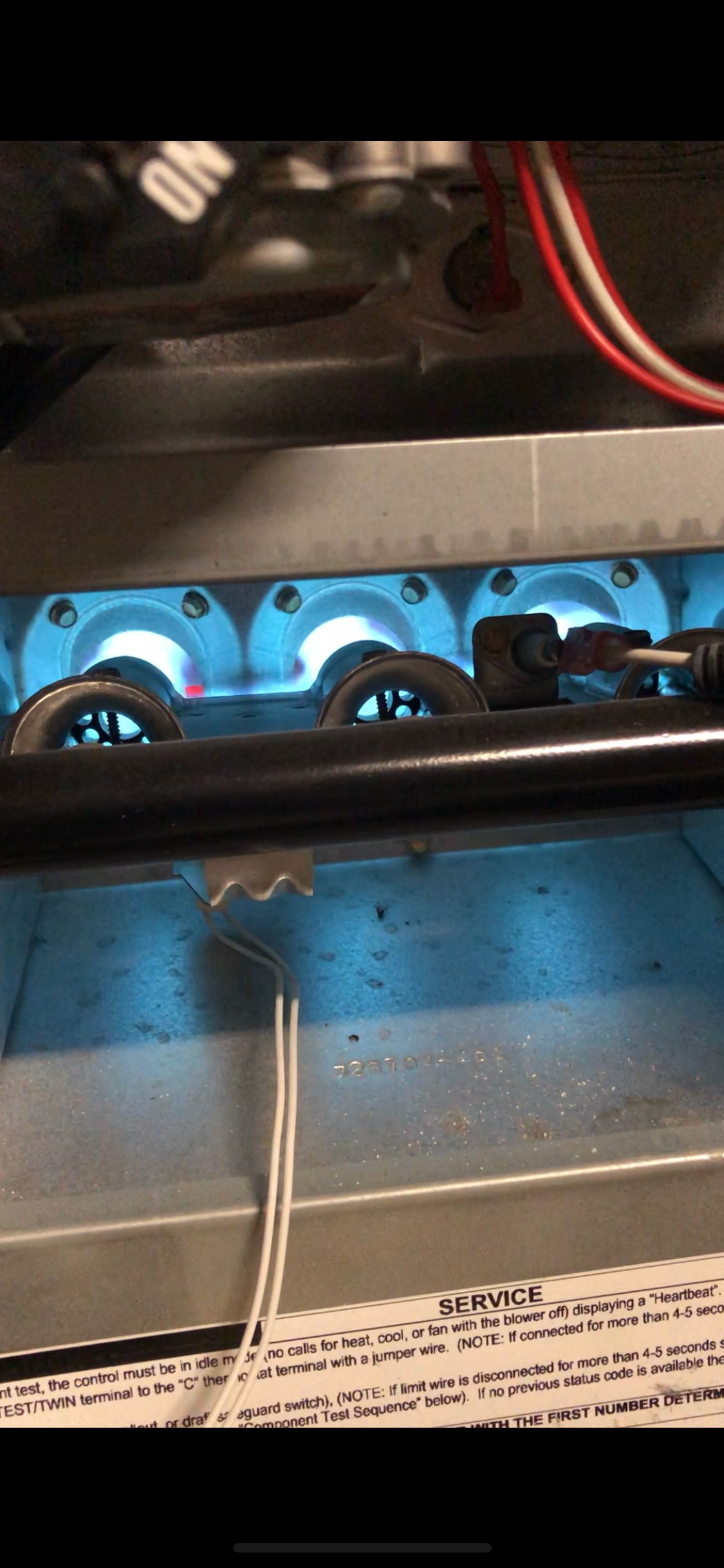Heat exchanges are installed in heating components to capture the heat and release it into the occupied space. Heat exchangers are manufactured in various sizes and shapes but all have the same objective, to absorb heat. High efficiency heat exchanges have a condensing heat exchanger that captures the steam before it gets in the flue.
This Unit was located in the crawlspace. The surrounding vapor barrier showed signs of constant moisture. Directly below the condensate line there seemed to a bit of moisture and a white powdery substance, indicative of efflorescence. The condensate line was dry at time of inspection and it properly drained outdoors.
my essay is on a an air conditioner system,the unit has two lines . the larger line carries the low pressure cold refrigerant and needs to be insulated to prevent condensation, the smaller line which carries the warm liquid to the evaporator is not insulated.
to inspect heating systems an inspector should use normal operating controls, they should be able to describe the the energy source such electric,gas or oil and what method is used for the heating system .be able to describe the defects if they are present and be able to identify the system
Compression can be used to cool the air that is being conditioned. The refrigerant gas in the air conditioner coils is being compressed. When the gas expands and contracts, cool temperatures are produced. Simply put, when you increase pressure on a gas, the temperature increases.
Gravity furnaces function on the premise of the rise and fall of warm and cold air. Heated air moves up into the house thru the supply vents and as the air cools is returned to the furnace thru return vents that feed the bottom of the furnace.
Central air units work on the premise of a compressor pushing liquid refrigerant to the A coil or evaporator where as it cools turns into a vapor state. As it does this is draws heat out of the air crossing the A coil that is blown across and cooled by the blower motor. As the vapor returns to the compressor outside of the house it releases this heat outside of the home.
HVAC system are a complicated device. An a coil is used for condensing Freon . this is how you get cold air. The heating side of a unit is by way of a burner, solenoids, blower motor… mother board and ventd
10 ways to save money …energy savings
Renewable energy will be the future because it is less harmful on the environment …using a genset DC batteries. DC power plant and or wind mill will be the eay to go in the near future.
Metal duct feeding the master bathroom is damaged. There is mechanical damage at the end next to the plumbing coming from the bathtub. There is also thinning areas of the duct that appears to have been exposed to water. The duct is rusting through. There are quarter sized holes in the duct. I recommend contacting a HVAC contractor to further evaluate the system and correct defects.
Waterproofing a basement is more about controlling and directing water than actually making a structure impervious to water. Keep water away from the foundation with proper grading and the use of gutters with appropriate downspout length. Divert the natural ground water into sumps to mechanically move the water away from the foundation. In most cases this effort is enough to keep most basements dry. In extreme cases where water table is high all the time you may not want to dig a basement. If you do, more substantial waterproofing is needed by creating a water resistant barrier on the outside walls of the basement.
This is a picture of my furnace. It is a 80-85% efficient unit. It has an intermittent pilot light and induction draft fan. There is only one heat exchanger and no condensate lines. It would be a 90-95% efficient if it had these things. The room does have a floor drain, so the system can be upgraded if and when it needs replacement. Everything was checked per the SOPs and all is well with this unit.
I read the article regarding carbon monoxide poisoning. The acceptable level for an 8 hour work shift is 35ppm (or 50ppm per OSHA0). The acceptable level for a home is 9ppm. A reading of 400ppm or more would require immediate evacuation of the area. The biggest source for carbon monoxide in a home is fuel fired appliances, generally furnace and water heater. If they have a failure, they can emit dangerous levels of CO. At the least, a CO detector should be on all levels of a home, at least within earshot of sleeping rooms.
This HVAC condenser unit at the time of the inspection did not work properly, It appears to be significantly aged during the inspection.The HVAC condenser unit has significant rust on the outside. Recommend further evaluation from an air conditioning specialist.
Condenser and condenser fan, the condenser is a complicated round system is formatted by condenser fan, filter dryer, refrigerant pipes, and high press ion switch, all this group of components of a condenser have the function of transform the liquid and vapor and change the temperature inside the home.
The heating system pictured is a hydronic boiler system that uses a hydroponic ground loop to heat the water in the system. The system is a high efficiency system with components that are not standard components that would normally be found on a boiler heater. Because of the complexity of the system it was recommended a certified hydroponic boiler technician further evaluate the system to determine if it is functioning properly.
I read “Inspecting the HVAC System for Duct Leaks and Energy Loss”. I learned that it is important to make sure the furnace cabinet is sealed properly in order to ensure maximum air flow to the ducts. I also learned that the addition of an A-coil for an AC unit can create a large amount of pressure in that area, therefore it is important to ensure the area is properly sealed as well.
Picture I have is the heating element of a gas HVAC system. It fired up and heated home. Look through pip area to see flame study and consistent. No gas smell or leaks detected at time of inspection. Flue vented to outside about roof area and sealed as needed.
Picture I choose to wright about from gallery is the heat exchanger. Seeing the movement and parts and how the items make each unit efficient has it needs to be in order to work properly. What makes each unit just a little different from the another unit.
